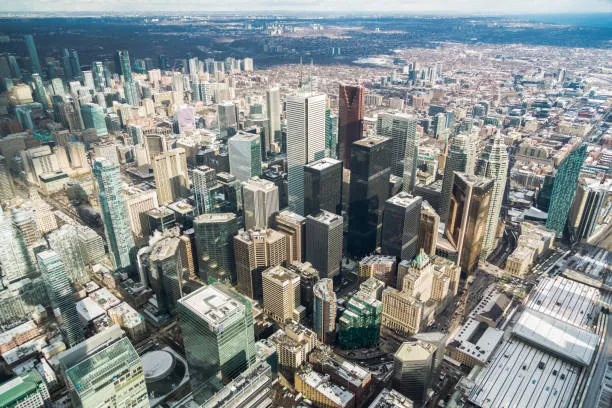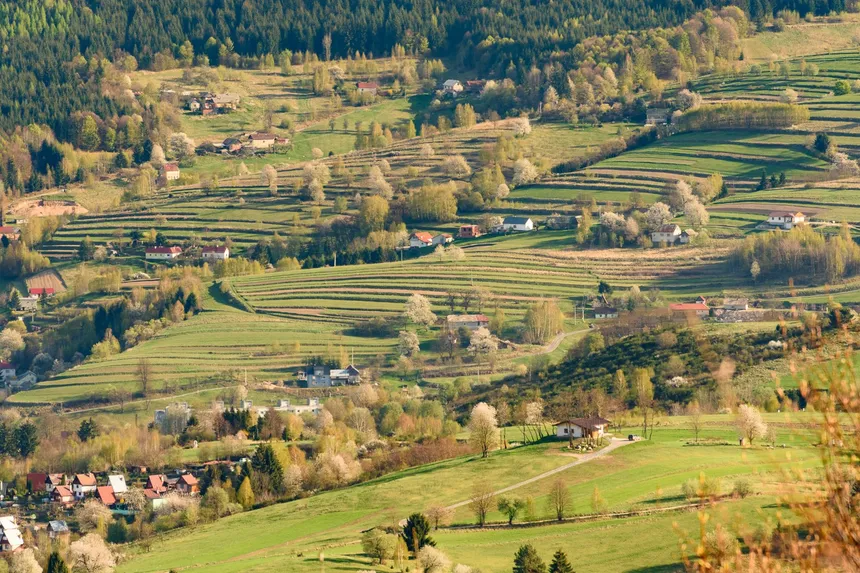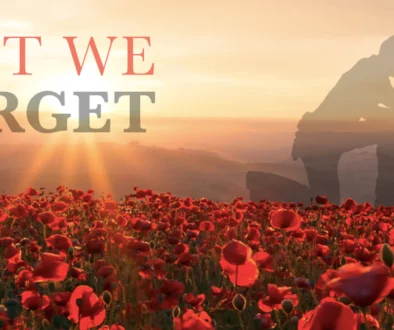MEGA CITIES ARE NOT GREEN; ARE THEY FUTURE GHOST TOWNS IN THE MAKING?
Once upon a time planners devised New Towns, and Garden cities where urban growth was to be directed to, so the cities would not grow beyond a human scale. Somewhere in the time after I left city planning as a frustrating waste of time, this concept was abandoned in favor of high density, high rise real estate developments.
The high density high rise model is being marketed as Green, presumably because it covers less land. I think the goal is more probably maximizing profits for developers. I first encountered the power of developers as a junior planner in the City of Montreal in the early 1960’s. The urban design section came up with an excellent proposal for the slopes below Mt. Royal that would have allowed peekaboo views of the Mountain from downtown Montreal.
It entailed some high rise blocks and some lower density town houses in between. Sadly, what happened was that the low rise was not built, to the detriment of urban design. And very probably livability for a mix of urban dwellers from families to singles.
From where I sat, the onslaught on the design came soon, at the birthday of the chief planner. A large table had to be set up outside his office to accommodate all the arm loads of liquor brought in by various developers. Now I am not saying gifts influenced the design, but certainly the argument must have been made as to why Developer A could build a highrise and profit more than Developer B next door, who could only have a few low rise units on his land. Difficult to argue with, when land is privately owned.

I bet this argument carries right across the country in our major cities. And no doubt across the globe, judging from the shiny glass towers in the Middle East deserts, where fortunes must be spent on air conditioning alone! Will they be so shiny when water disappears from this mismanagement?
Multi million person cities crammed into tight urban infrastructure cannot possibly be green! What nature does naturally, as part of her role, namely balancing greenhouse gases, especially CO2, and oxygen production to sustain life, has to be done by technology in the mega city. That is to say we must waste a lot of energy via petroleum products, since wind or solar cannot be adequate for the job, of heating and air conditioning the high rise jungle.To argue that this is, or could ever be green is wishful thinking! Just think of the square miles of solar panels that would have to cover potential farm land to (maybe) do the job!
There may well be political reasons for the mega city, besides real estate profiteering. Some have alleged that controlling the population in what amounts to unsustainable, virtual concentration camps where your survival — via food and water supplies for example — is in the hands of some global entity, far removed from local control, is the real name of the game! Whether pure greed, or psychotic desire for global control, I feel the present system is close to ecological breaking point, as well as to a collapse of our humanity.
Back in the first half of the 20th century attempts were made to use nature as a friend in the building of cities. We called it New Towns, and some were built. Do your own research, if you want to learn more.
I think we need to return to a similar principle, but there is one issue that has to be dealt with first. In Canada and the US it is a sort of sacred cow topic. I’m talking about the artificial population growth of our countries via massive immigration numbers.
I cannot speak about the US, but in Canada we love to say “we have an empty country, and can take in untold millions”. However, when you delve a bit more deeply you find the following interesting statistic: “Ever since Confederation, 90% of the population has lived on 1% of the land along the US border”. Now why do you suppose that is? Could it have to do with the geography of Canada? As my husband used to say, “You can’t grow potatoes in permafrost”. And that covers half of Canada, or more.
So, unless we were to bring in only immigrants from similar northern latitudes, most new Canadians will prefer to live in milder climates, similar to where they came from. I’m sure that was one of my parents’ considerations when we came to Canada post World War 2, and settled in Vancouver. Incidentally, at that time Canada had barely 10 million people.
It is strange that we know there is a relationship between wildlife habitats and animal populations, but refuse to carry that concept to the human animal. But it is there as well. How much food can we produce domestically to feed how many Canadians? That is the never asked question. And could we still do so if climate change knocks out the prairies? I have a 1960’s Environment Canada report where they estimate that with a 3C degree warming our plains would dezertify, and be unable to produce any wheat and other food crops!
We are already seeing continuous draughts in California, whence much of our vegetables come from even today. It isn’t a stretch of the imagination to realize that in cases of shortage they will feed their people first before exporting the necessary food. Even corporate profiteering must have eventual limits!
Given a much reduced population increase we would not need to continue increasing urban densities in our major cities via continuous, ever denser growth! Should we not say: “Enough is enough, we need to live within our means, in harmony with nature in Canada”?
Now let’s go back to the urban design ideas that lay behind the New Town and Garden City concepts. It went back to earlier days when villages were surrounded by farms and forests, which not only provided food, but also were able to correct any imbalances between manmade CO2 emissions and the production of oxygen by green plants which translated into clean breathable air, and probably even a stable climate! I think this is the concept that we need to go back to.
While most of the so called Old World — Europe and Asia — has moved away from a balance between man and ecology after the industrial revolution, the Indigenous people of the US, and Canada still have a recollection of their lifestyle before contact. Many are sending warnings of impending disaster unless we return to a balance between our activities and nature’s capacity to function unimpaired. I recommend “Red Alert” by prof. Daniel R. Wildcat, as a witty and pertinent statement of the North American situation, and how Native traditions could save us.
There was probably some form of spiritual and practical similarity between the Indigenous traditions and the old European village concept in that people were closer to the natural world, and paid attention to the messages it was sending, often seeing them as Divine. No doubt this also existed in the traditional Asian, African, and other societies, but I am not familiar with them. Today Canadians of all different traditions need to think back to their cultures’ sustainable concepts, and together we need to look to a future that re-creates a balance between man and our relatives in nature and mother Earth. The high rise glass towers of our megacities, which we seem to be actually proud of, should be seen as the wrong turn on the road to survival, from which we need to reverse direction before it is too late!

I offer this essay as an urgent call to rethink the path we are on. People are natural beings, no less than the birds, insects and animals whose habitats we are destroying at our peril. We need the wild forests, prairies, clean rivers, and lakes as well as the undeveloped meadows and mountains with their clear streams, and that includes uncontaminated farmland. We need them for our sanity, and survival and we need them nearby, where we can see, and touch them, not virtually on line! We need them close by where they can provide fresh food from nearby family farms, without energy intensive transport. In actual fact we are just as dependent on the Earth we live on as our Stone Age ancestors were. To deny this is ignorant hubris!
Small “vest pocket” parks in man made glass tunnels that are to represent “the new habitat,” are simply some technocrats’ vision concocted in one of these glass towers. Sadly, it has nothing to do with what life and humanity are all about. These technocrats seem to think they can successfully play God, but they can’t. All they can do is lead mankind to the destruction of life on Earth!
So how can we go about changing to a more life oriented democratic Canada? Given the enormous investments in the current urban model, no change will come overnight. What we can do at the moment is to visualize the new goal, and begin moving toward it step by step.
The easiest place to begin could well be the small communities which may still have some of the structures we want to revitalize, and build on. People need to have the choice of what their community looks like and will look like into the future. And local residents certainly know their communities and surrounding country better than someone a continent away. What is not certain is whether some of the locals have not dreamed of “development”, having bought the corporate promises of jobs and wealth in return for a water contaminating mine, a fracking operation or some other destructive land use. Sadly most of us active in the field of environmental protection know these scenarios all too well.
So while it makes sense that the affected locality should have the right to decide what if any future developments will take place there, considerable efforts to educate community members may be required. But that too is a part of real democracy. For example in our small community (where I spend summers) the Regional rep, and many local business and real state people, were excited when a large commercial cannabis operation chose to start large scale developments there. Hundreds of jobs were promised, but when reality hit on the ground the realtor, once a keen supporter, whose home was next door to the operation, “was devastated” at the drop in her real estate values. In the end the bottom fell out of these operations and after making a mess of the site (zoned agricultural), no production and jobs have materialized to date. This cautionary tale has not sunk in with the local “leaders” who are still hoping for a pot of gold at the end of some rainbow. Hopefully the community at large will be wiser and more vocal next time!
Local power is a really novel idea in Canada, it would seem. We have had federal and provincial governments impose mines, pipelines, Hydro dams, Garbage dumps from distant cities, and on and on, upon communities which don’t have any real power to turn them down. These projects should be subject to a binding referendum after a full community wide debate. At least in a country that likes to describe itself as a democracy! With greater local power this would hopefully change.
But the question remains: how can communities exercise greater local power when the Provinces control their purse strings? Maybe that is where change needs to begin!
EL


